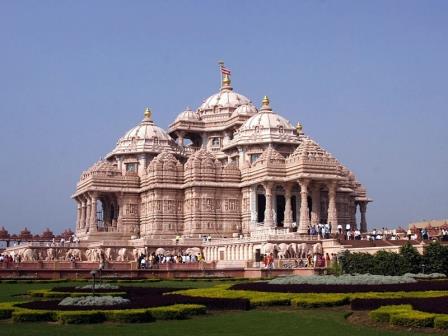
Law and Religion in India
“India is imbued with religion.” A 2001 World Values Survey found that 80 percent of the Indian population considered themselves a “religious person,” with 88 percent reporting that they “meditate or pray,” and 93 percent “belonging to a religious denomination.”
As a self-proclaimed secular state, India has no official religion. Hindus are the largest religious group in the country, consisting of 80.5 percent of the population, though this number may be inflated due to societal advantages of identifying as Hindu. The next largest religious groups are Muslims (13.4 percent), Christians (2.3 percent), and Sikhs (1.9 percent). Buddhists, Jains, Parsis (Zoroastrians), Bahais, and Jews make up less than 1.1 percent of the population. Of Muslims, approximately 85 percent are Sunni and 15 percent are Shia, with India having the world’s second largest Muslim population within its borders.
The 1992 National Commission for Minorities Act designated five religious communities as minorities: Muslims, Sikhs, Christians, Parsis, and Buddhists. Religious minority communities are not geographically uniform in their dispersion across the country, tending to cluster in different parts of the nation. For example, a majority of the citizens of the states of Jammu and Kashmir are Muslim; large Christian majorities are found in the northeastern states of Nagaland, Mizoram, and Meghalaya; and in the state of Punjab, Sikhs are the majority. The government observes several religious holidays as national holidays, including Good Friday and Christmas (Christian), the two Eids (Islamic), Lord Buddha’s Birthday (Buddhist), Guru Nanak’s Birthday (Sikh), the Birthday of Lord Mahavir (Jain), and the holidays of Dissehra, Diwali, and Holi (Hindu). Notwithstanding this religious diversity, Sunday is widely treated as the weekly day of rest.
A troublesome statistic in India is the number of clashes between religious groups and organized attacks on local religious minorities which occur yearly, with 826 such incidents reported in 2009 (down from 943 in 2008), with 125 deaths (down from 167 deaths in 2008) and 2,424 injuries (up from 2,354 injuries in 2008), as reported by the Ministry of Home Affairs.
Constitutional Provisions and Ordinances on Religion
The Constitutional structure of India recognizes group identity based on caste, language, religion, or region. India’s Constitution provides citizens with many important freedoms essential to religious practice, including the freedom of assembly, movement, speech and the freedom “to practice, preach, and propagate” as they please. Part III of the Constitution of India declares the “Fundamental Rights” of each citizen and contains several Articles providing and protecting religious freedom. Some of these Articles qualify the freedoms as subject to public order, etc.